<< Our Photo Pages >> Long Man of Wilmington - Hill Figure or Geoglyph in England in East Sussex
Submitted by Andy B on Friday, 19 May 2023 Page Views: 49604
Date UncertainSite Name: Long Man of WilmingtonCountry: England County: East Sussex Type: Hill Figure or Geoglyph
Nearest Town: Eastbourne
Map Ref: TQ543035 Landranger Map Number: 199
Latitude: 50.810507N Longitude: 0.188725E
Condition:
| 5 | Perfect |
| 4 | Almost Perfect |
| 3 | Reasonable but with some damage |
| 2 | Ruined but still recognisable as an ancient site |
| 1 | Pretty much destroyed, possibly visible as crop marks |
| 0 | No data. |
| -1 | Completely destroyed |
| 5 | Superb |
| 4 | Good |
| 3 | Ordinary |
| 2 | Not Good |
| 1 | Awful |
| 0 | No data. |
| 5 | Can be driven to, probably with disabled access |
| 4 | Short walk on a footpath |
| 3 | Requiring a bit more of a walk |
| 2 | A long walk |
| 1 | In the middle of nowhere, a nightmare to find |
| 0 | No data. |
| 5 | co-ordinates taken by GPS or official recorded co-ordinates |
| 4 | co-ordinates scaled from a detailed map |
| 3 | co-ordinates scaled from a bad map |
| 2 | co-ordinates of the nearest village |
| 1 | co-ordinates of the nearest town |
| 0 | no data |
Internal Links:
External Links:
I have visited· I would like to visit
coldrum would like to visit
Catrinm visited on 22nd Mar 2019 - their rating: Cond: 4 Amb: 4 Access: 4
Harmudge visited on 1st Jan 2016 - their rating: Cond: 5 Amb: 4 Access: 3
XIII saw from a distance on 11th Aug 2015 - their rating: Amb: 4 Access: 3
jonm visited on 16th Sep 2012 - their rating: Cond: 4 Amb: 4 Access: 4
custer visited on 5th Apr 2012 - their rating: Cond: 4 Amb: 4 Access: 4 Good walk around the top of the hill car park and toilets available at priory. Figure marked out with concrete blocks, fantastic views. lots of additional earthworks around the site at bottom of hill and on top.
Klingon saw from a distance on 19th Jul 2011 - their rating: Cond: 4 Amb: 5 Access: 3
graemefield saw from a distance on 27th Jun 2011 - their rating: Cond: 4 Amb: 4
bat400 visited on 1st Sep 1987 - their rating: Cond: 3 Amb: 4 Access: 5
NickyD visited - their rating: Cond: 5 Amb: 4 Access: 3
hidebasket visited - their rating: Cond: 4 Amb: 5 Access: 4
myf have visited here
Average ratings for this site from all visit loggers: Condition: 4.11 Ambience: 4.2 Access: 3.67

The figure is outlined in white on the hillside, with no recognizable facial or anatomical features.
Page originally by Vicky
You may be viewing yesterday's version of this page. To see the most up to date information please register for a free account.
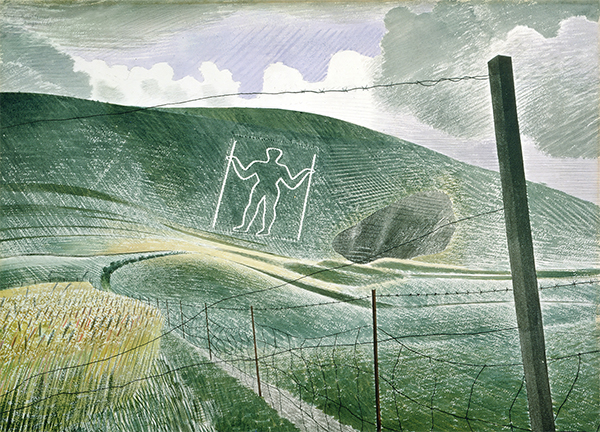
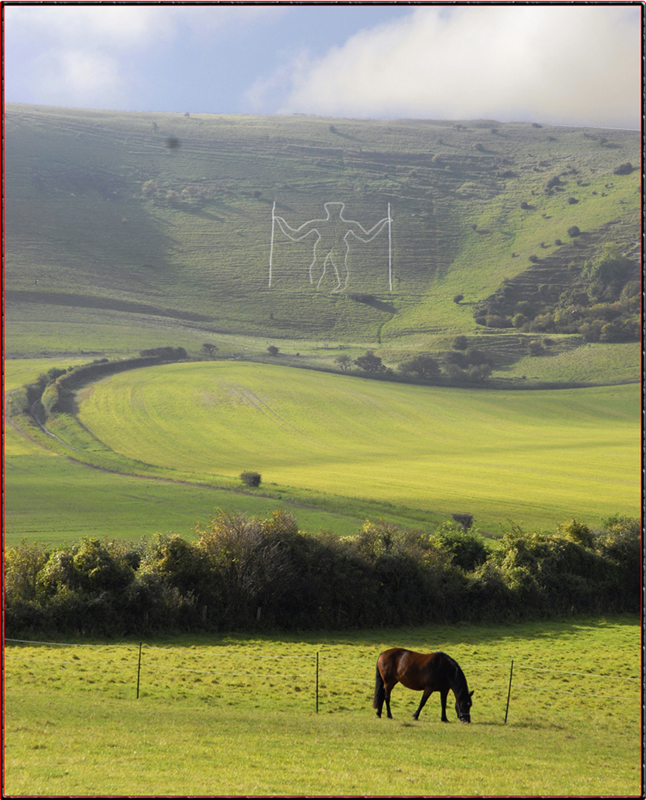
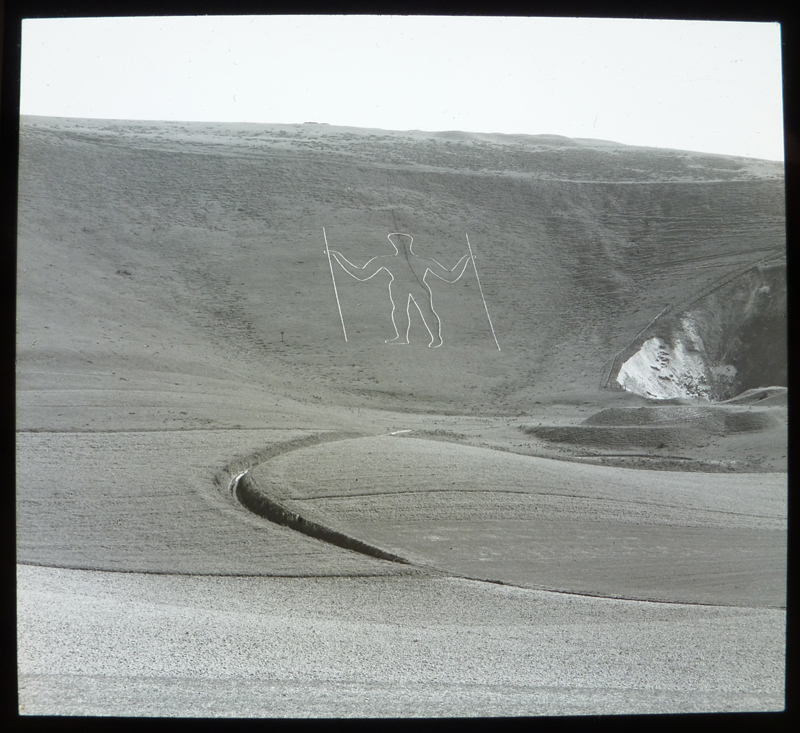
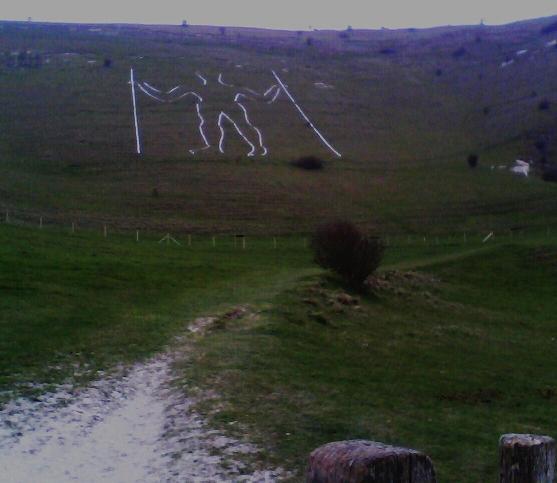

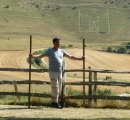
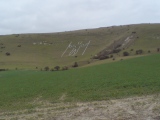
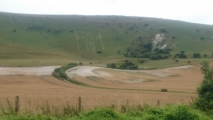

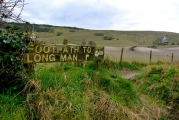
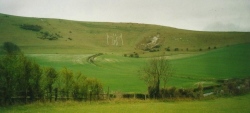
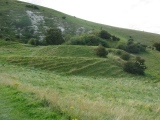



Do not use the above information on other web sites or publications without permission of the contributor.
Click here to see more info for this site
Nearby sites
Key: Red: member's photo, Blue: 3rd party photo, Yellow: other image, Green: no photo - please go there and take one, Grey: site destroyed
Download sites to:
KML (Google Earth)
GPX (GPS waypoints)
CSV (Garmin/Navman)
CSV (Excel)
To unlock full downloads you need to sign up as a Contributory Member. Otherwise downloads are limited to 50 sites.
Turn off the page maps and other distractions
Nearby sites listing. In the following links * = Image available
107m WNW 286° Long Man Ring Platform* Misc. Earthwork (TQ5419603527)
132m WNW 293° Long Man Bottom* Round Barrow(s) (TQ5417603547)
200m S 182° Windover Hill Flint Mines* Ancient Mine, Quarry or other Industry (TQ543033)
208m SSW 209° Long Man Hill Cuttings* Misc. Earthwork (TQ5420503315)
227m SE 133° Windover-Wilmington Barrow* Round Barrow(s) (TQ5447103350)
262m SSW 199° Windover Hill * Barrow Cemetery (TQ54220325)
360m WSW 238° Windover Hill * Long Barrow (TQ540033)
451m ESE 106° Wilmington Hill Staging Tumulus* Round Barrow(s) (TQ5473803388)
552m E 98° Wilmington Hill Tumulus* Round Barrow(s) (TQ54850344)
694m E 79° Hunters Burgh Long Barrow* Long Barrow (TQ54980365)
804m SW 214° Deep Dean Tenantry Ground Barrow* Round Barrow(s) (TQ53870282)
1.1km SW 215° Deap Dean* Barrow Cemetery (TQ537026)
1.1km SE 134° Barrows West of Hill Barn* Artificial Mound (TQ55150273)
1.2km ESE 119° Hill Barn Tumuli* Barrow Cemetery (TQ55390293)
1.3km WNW 285° The Rookery Earthworks Misc. Earthwork (TQ530038)
1.4km SSE 150° Holt Brow Tumulus* Round Barrow(s) (TQ5506802270)
1.6km ESE 118° Folkington Hill Round Barrow(s) (TQ55720279)
1.6km SSE 153° Holt Brow South Tumulus* Artificial Mound (TQ55090205)
1.7km SSW 200° Fore Down Cross Dyke* Misc. Earthwork (TQ5376701881)
1.8km SSW 201° Fore Down Tumulus * Round Barrow(s) (TQ53710178)
2.0km S 183° Lullington/Clay Bottom* Misc. Earthwork (TQ5424201455)
2.3km SSE 166° Clay Bottom Tumulus* Artificial Mound (TQ5491401269)
2.3km W 262° Alfriston Natural Stone / Erratic / Other Natural Feature (TQ520031)
2.5km SSW 194° Friston Forest* Round Barrow(s) (TQ53760107)
2.9km SSW 195° Charleston Bottom (Upper Ridge) Field System Misc. Earthwork (TQ53630068)
View more nearby sites and additional images



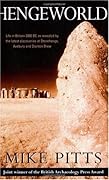


 We would like to know more about this location. Please feel free to add a brief description and any relevant information in your own language.
We would like to know more about this location. Please feel free to add a brief description and any relevant information in your own language. Wir möchten mehr über diese Stätte erfahren. Bitte zögern Sie nicht, eine kurze Beschreibung und relevante Informationen in Deutsch hinzuzufügen.
Wir möchten mehr über diese Stätte erfahren. Bitte zögern Sie nicht, eine kurze Beschreibung und relevante Informationen in Deutsch hinzuzufügen. Nous aimerions en savoir encore un peu sur les lieux. S'il vous plaît n'hesitez pas à ajouter une courte description et tous les renseignements pertinents dans votre propre langue.
Nous aimerions en savoir encore un peu sur les lieux. S'il vous plaît n'hesitez pas à ajouter une courte description et tous les renseignements pertinents dans votre propre langue. Quisieramos informarnos un poco más de las lugares. No dude en añadir una breve descripción y otros datos relevantes en su propio idioma.
Quisieramos informarnos un poco más de las lugares. No dude en añadir una breve descripción y otros datos relevantes en su propio idioma.